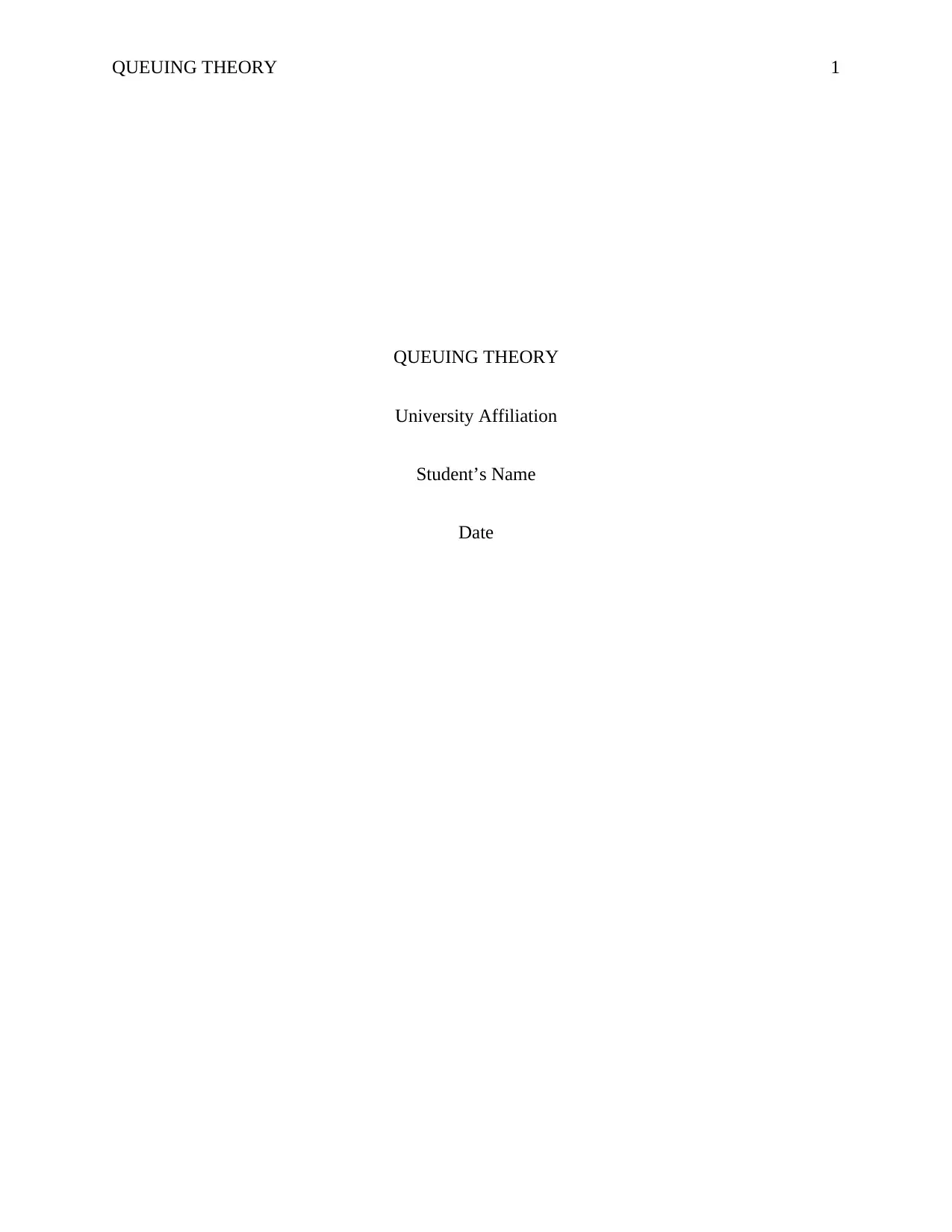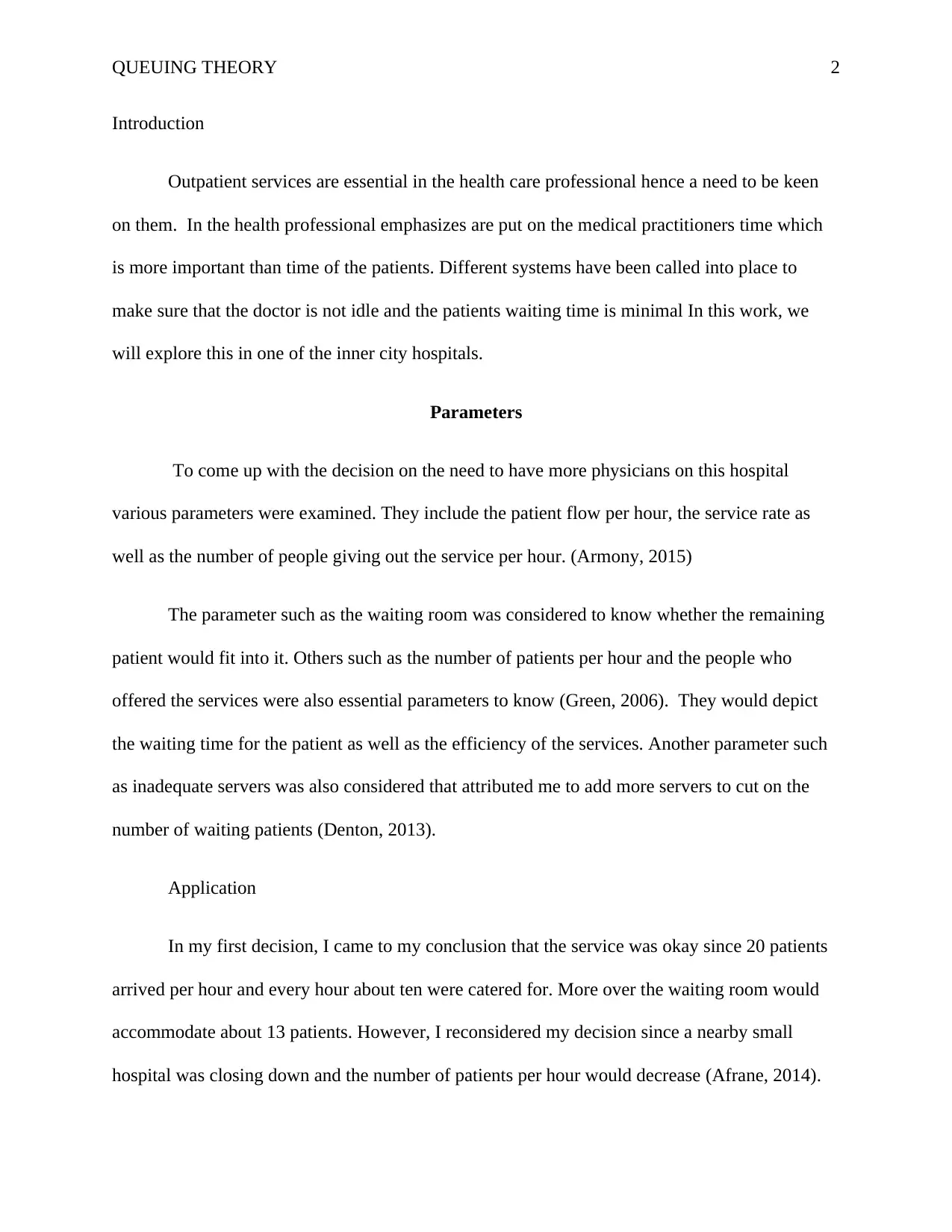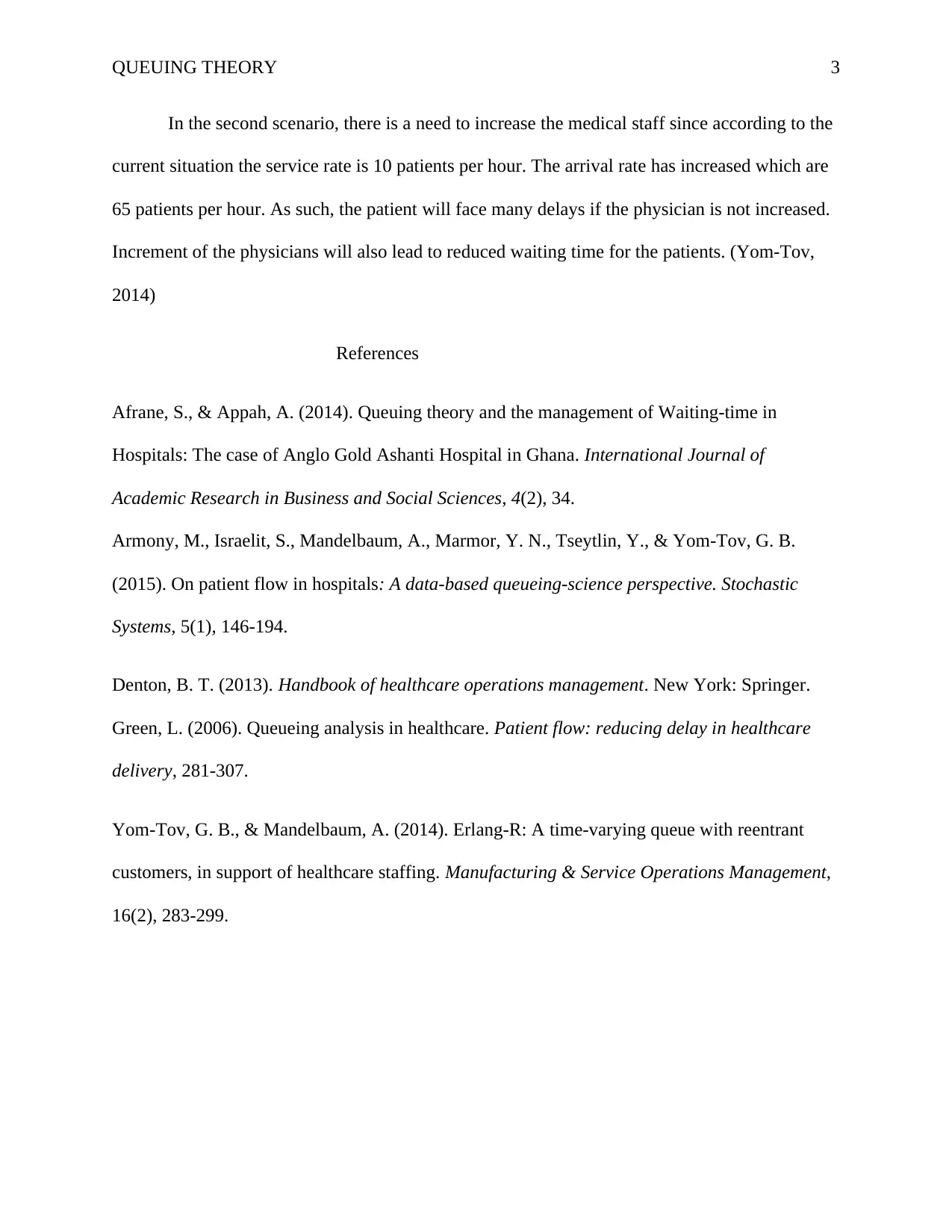Hospital Patient Flow Analysis using Queuing Theory
VerifiedAdded on 2020/03/04
|3
|576
|55
Project
AI Summary
This assignment delves into the application of queuing theory within a healthcare setting, specifically focusing on patient flow analysis in a hospital environment. The project begins by outlining the key parameters considered, such as patient arrival rates, service rates, and the capacity of the waiting room. The assignment then explores the impact of these parameters on patient waiting times and overall hospital efficiency. A scenario is presented where the initial analysis suggests adequate service levels, however, a change in circumstances, such as the closure of a nearby hospital and an increase in the patient arrival rate, necessitates a reevaluation of the staffing levels to accommodate the increased demand and minimize patient wait times. The assignment highlights the importance of adjusting resources, such as increasing the number of physicians, to maintain an acceptable level of service and improve the patient experience. The references provided support the concepts of queuing theory and its applications in managing healthcare operations.
1 out of 3









![[object Object]](/_next/static/media/star-bottom.7253800d.svg)